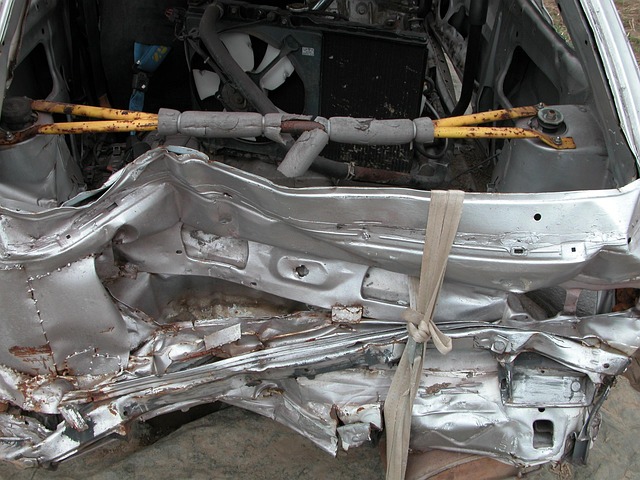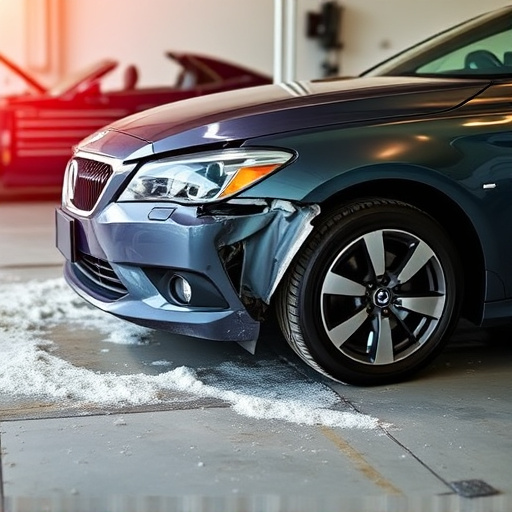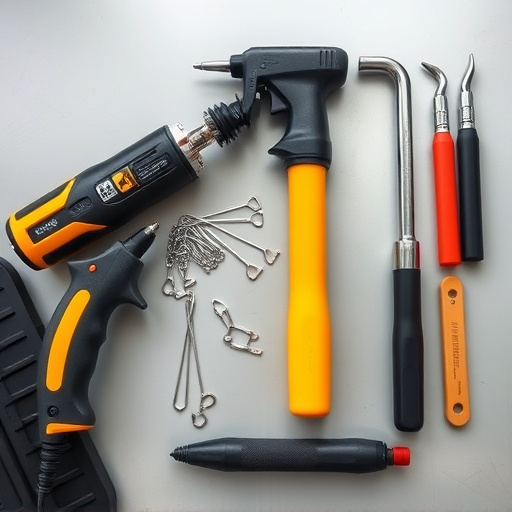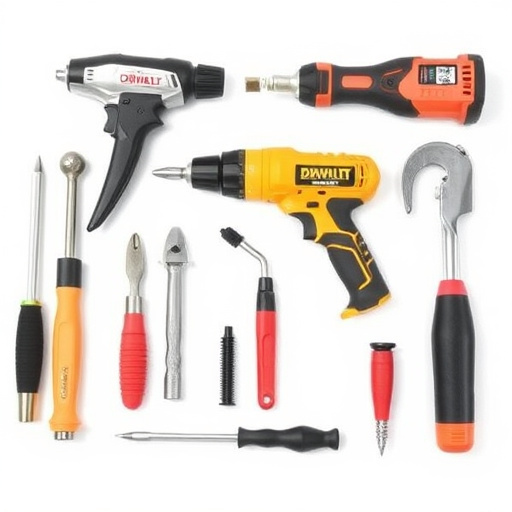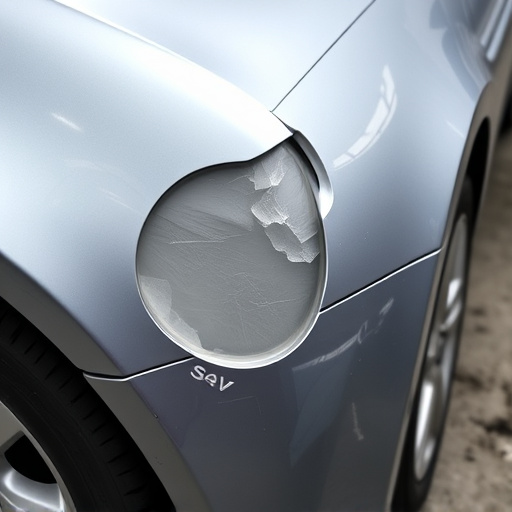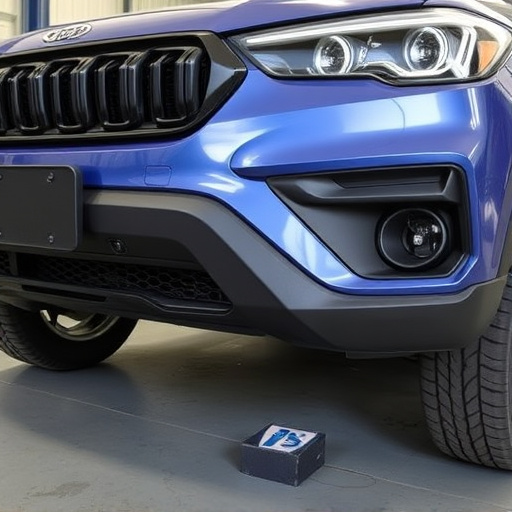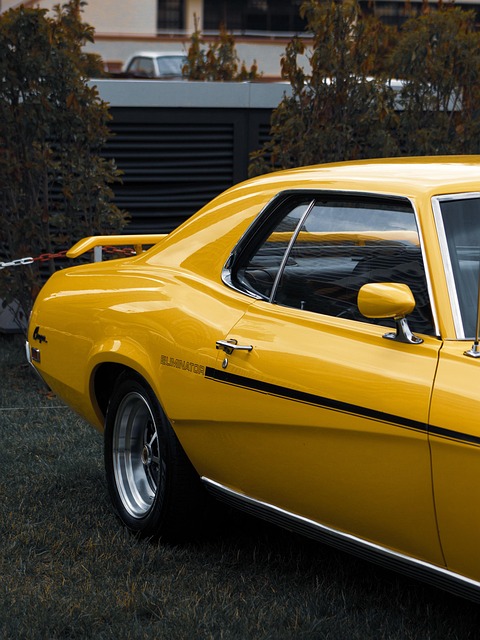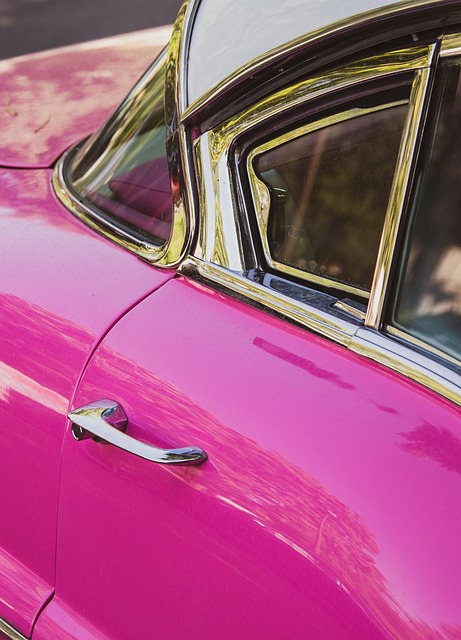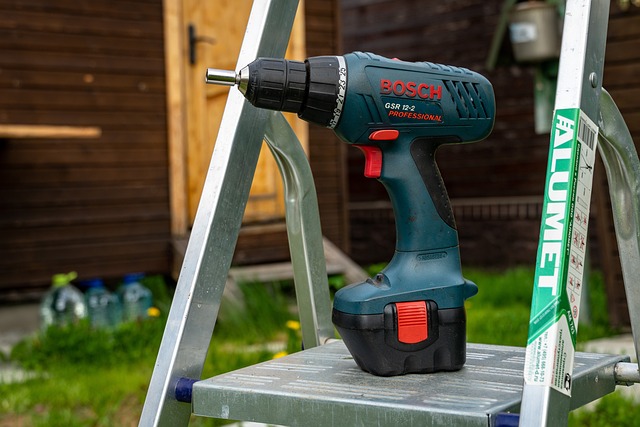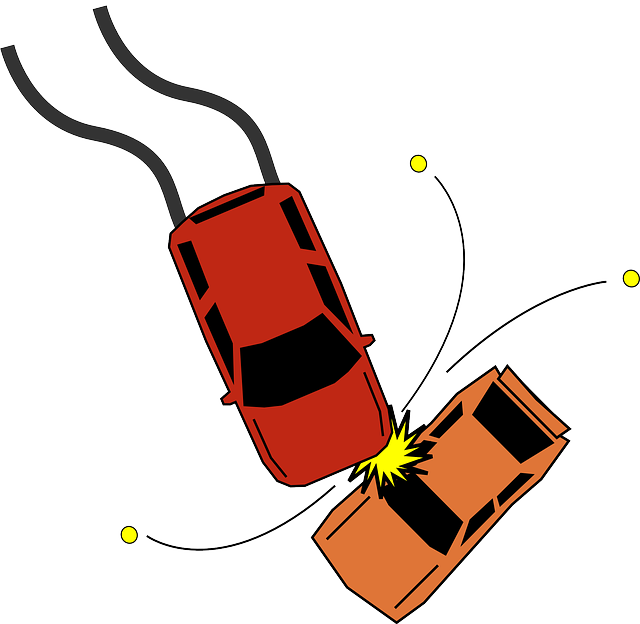For effective rain sensor glass repair, thorough preparation is key. Gather compatible tools, high-quality replacement sensors, and clean the sensor area. A pre-repair inspection ensures seamless post-replacement results. Understand the sensor's moisture detection function and its integration with vehicle systems like ADAS and infotainment. Prioritize expert care in professional body shops to maintain your car's safety features optimally. Follow manufacturer instructions carefully for precise alignment and secure fastening, avoiding future complications.
Looking to update your vehicle’s rain sensor glass? This comprehensive guide walks you through the process from start to finish, ensuring optimal performance. First, prepare by understanding the rain sensor’s function, gathering the right tools, and implementing safety precautions. Then, follow a step-by-step guide for removal of old sensors, installation of new ones, and calibration. Finally, learn post-replacement checks, maintenance tips, and how to troubleshoot common issues like faulty sensor performance in different weather conditions, from rain to fog.
- Preparing for the Replacement
- – Understanding the glass sensor's function and its role in your vehicle's systems.
- – Gathering necessary tools and parts for the repair.
Preparing for the Replacement

Before diving into the replacement process, preparing for rain sensor glass repair is a crucial step. Begin by gathering all necessary tools and parts, ensuring they are compatible with your vehicle model. This includes obtaining high-quality replacement sensors known for their durability and precision. It’s also essential to clean the area around the sensor to eliminate any debris or contaminants that might interfere with its functionality. A meticulous pre-repair inspection will help ensure a seamless post-replacement experience, enhancing the overall effectiveness of your vehicle restoration efforts.
Additionally, understanding the intricate mechanics involved in rain sensor glass repair is key. The sensors are designed to detect moisture on the windshield, ensuring optimal visibility during adverse weather conditions. During the replacement process, careful consideration must be given to aligning and securing the new sensor accurately. This not only guarantees its effectiveness but also aligns with top-notch collision repair services standards, contributing to your car body repair’s longevity and performance.
– Understanding the glass sensor's function and its role in your vehicle's systems.

The rain sensor glass, often an integral part of modern vehicles, plays a pivotal role in enhancing safety and driving comfort. It acts as a sophisticated weather-sensing mechanism, detecting precipitation like rain or snow on the windshield. This real-time data is then relayed to the vehicle’s system, allowing for automatic adjustments such as actuating the wipers or activating defrosters. By ensuring optimal visibility, it contributes significantly to safe driving conditions, especially during adverse weather.
When undertaking a rain sensor glass repair, understanding its intricate connection with various vehicle systems is crucial. This includes recognizing how it interacts with technologies like advanced driver-assistance systems (ADAS) and in-car infotainment. A professional vehicle body shop or tire services provider, skilled in car body repair, will possess the expertise to handle such delicate replacements, ensuring your vehicle’s safety features function at peak efficiency post-repair.
– Gathering necessary tools and parts for the repair.

Before embarking on a rain sensor glass repair, ensure you have all the necessary tools and parts at hand. This typically includes a new rain sensor glass, screwdrivers (both flathead and Phillips), pliers, and possibly a replacement sealant. It’s crucial to gather these precisely as specified by your vehicle’s manufacturer to guarantee a seamless auto repair shop experience. Moreover, for those looking to DIY this process, investing in high-quality tools can make all the difference, preventing issues akin to car dent repairs that could arise from subpar equipment.
Once assembled, carefully navigate the intricate process of replacing the sensor, ensuring proper alignment and secure fastening. Remember, precision is key; a hasty job might lead to complications, mirroring those encountered in auto frame repair. In contrast, meticulous attention to detail will ensure your rain sensor glass functions optimally, enhancing your vehicle’s overall performance, much like how a well-repaired car dent repairs not just the visible damage but also restores structural integrity.
When replacing a rain sensor glass, proper application of updates is key to ensure seamless functionality. Before beginning the process, familiarize yourself with your vehicle’s systems and gather all required tools and parts. During replacement, carefully follow manufacturer guidelines, paying close attention to detail in connecting and calibrating the new sensor. Regular maintenance and timely repairs, such as this rain sensor glass repair, contribute to optimal vehicle performance and safety, ensuring a clear view for secure driving, especially in adverse weather conditions.
